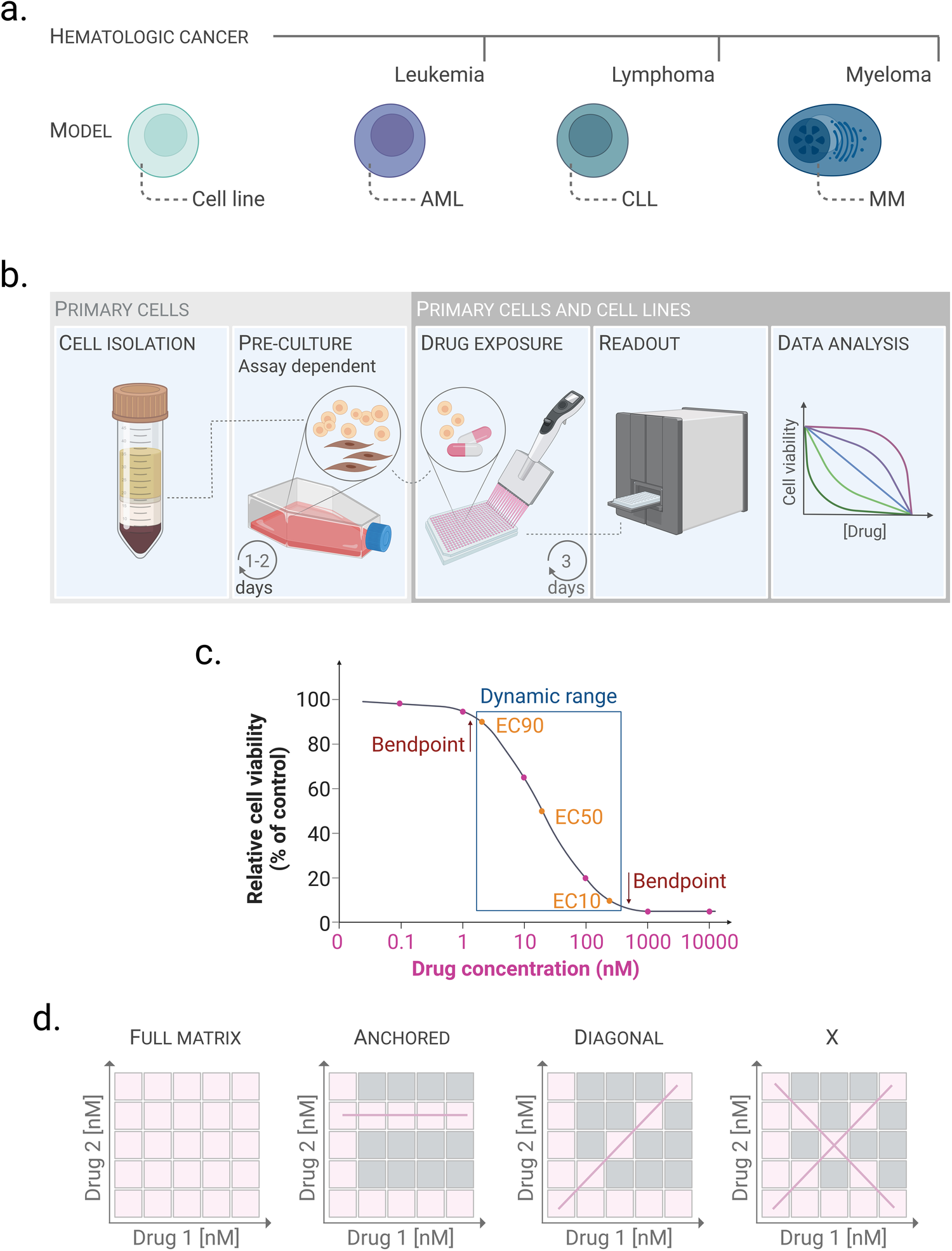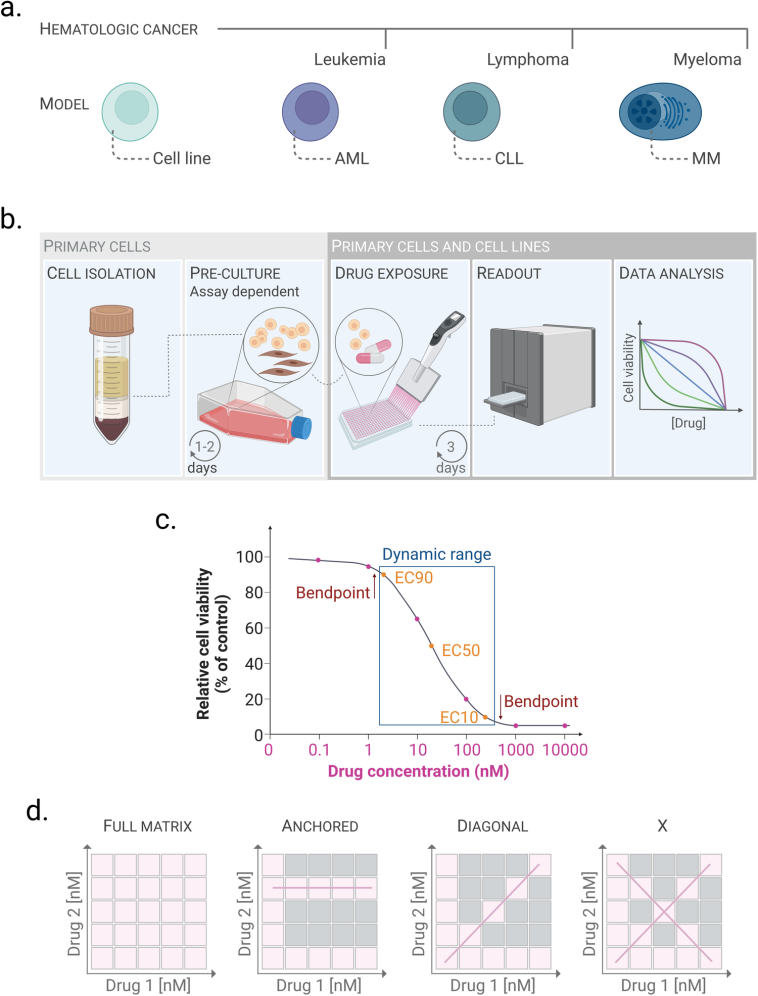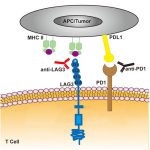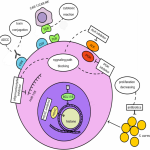
Generic Chemotherapy Drugs: A Question of Quality and Patient Safety
The global reliance on generic chemotherapy drugs is a subject that raises many tricky parts and serious questions regarding patient safety, especially when recent findings reveal that some of these medicines fail to meet basic quality standards. This opinion editorial takes a closer look at the situation, exploring the tangled issues behind what appears to be a widespread problem and discussing its implications on a global scale.
Understanding the Quality Challenge in Cancer Treatment
Recent investigations have exposed that several generic chemotherapy products used in the treatment of common cancers—including breast, ovarian, and leukemia—contain either too little or too much of their key active ingredients. This discrepancy creates severe risks for patients who depend on these drugs to fight their disease, as an underdose could render a treatment ineffective, while an overdose might lead to toxic side effects.
In a study conducted in collaboration with researchers from various countries, including Cameroon, Ethiopia, Kenya, and Malawi, nearly one-fifth of the drug samples tested did not meet the expected quality standards. These products were manufactured primarily in India, with a minority meeting the required thresholds. Although many companies produce generic medicines safely, these results bring to light the consequences when cost-cutting measures and pricing pressures interfere with proper quality control.
Quality Control in Global Cancer Drug Markets
Quality control in the production of generic drugs is critical not only for ensuring their efficacy but also for protecting patients from the dangerous side effects of incorrect dosing. The study revealed that many drugs had active ingredient levels that deviated significantly from those stated on the label. The variations ranged from less than 88% to more than 112% of the declared amount.
This situation is particularly concerning because chemotherapy drugs require a very delicate balance. The active ingredient is super important—enough must be present to combat cancer cells, while too much might damage healthy tissues. When even one dose is off, the unpredictable effects can lead to treatment failure or potentially fatal outcomes.
Indicators of Substandard Medications
Healthcare professionals have observed alarming signs that hint at quality issues in generic drugs:
- Instances where patients experience no common side effects, suggesting the active ingredient may be below the desired concentration.
- Sudden discontinuation of a drug’s effectiveness mid-treatment, potentially indicating an overdose or loss of potency.
- Changes in the color or consistency of the medication, which may be a visible sign that something has gone wrong during manufacturing or storage.
These subtle details, when taken together, force us to question whether current global quality control methods are enough to ensure that patients receive safe and effective treatments.
The Global Impact: Patients, Providers, and Regulators
The findings of substandard generic chemotherapy drugs have far-reaching implications. In many low- and middle-income countries, where the cost of healthcare is already a significant burden, patients often pay out of pocket for essential cancer medications. When these medicines do not work reliably, it is not just a health crisis—it becomes a matter of fairness and equity.
In nations across Africa, Asia, and even wealthier countries such as the United States, the discrepancy in drug quality creates a two-tier system: those who have access to well-regulated, high-quality drugs and those who do not. For oncologists and pharmacists working in resource-constrained settings, the challenge is even more intimidating because the subtle signs indicating a flawed drug might only be noticeable after critical treatments have already been compromised.
Regulatory Disparities and Their Consequences
One of the key issues lies in the global diversity of regulatory capabilities. In some nations, regulatory agencies are well-funded and have strict protocols for drug testing and quality assurance. In others, however, resources are limited, making it difficult for health authorities to test even a small fraction of the available medications.
The study highlights that in countries like Nepal and Ethiopia, despite having thousands of medicines on the market, the national laboratories barely have the capacity to test a handful of drugs annually. This situation leaves patients and local doctors without any reliable way to confirm whether the drugs they are using are safe.
Key Regulatory Challenges:
- Lack of adequate funding and infrastructure for laboratory testing.
- Insufficient training and resources for regulatory agencies in low-income regions.
- The overwhelming number of generic drugs on the market versus the limited capacity to monitor them.
- Cross-border supply chains that complicate tracking and accountability, particularly when products travel through multiple nations.
Cost Pressures and the Race to the Bottom
The cancer drug market is a fiercely competitive arena where price pressures force manufacturers to skim costs wherever possible. This race to offer the lowest prices often leads to corners being cut in manufacturing processes, quality control, and even storage conditions in the supply chain.
When companies face a global market driven almost entirely by price, they may be tempted to use outdated or less precise equipment, leading to drugs that do not meet international standards. The resulting variability not only endangers patients but can also undermine confidence in the entire healthcare system.
This dynamic has led to situations where major manufacturers in India have, over time, consolidated their market share while reducing prices. However, this cost-driven market is loaded with problems, as it may compel a manufacturer to prioritize financial returns over stringent quality control, sometimes leaving only a few companies accountable for the supply of critical chemotherapy drugs.
Balancing Cost and Safety
The economics of generic drugs is riddled with tension. Lowering production costs is undeniably attractive from a commercial standpoint, but if these savings come at the expense of patient safety, the repercussions can be tremendous. In some instances, batches of chemotherapy drugs provided as generics contained such low doses that their use would be almost as ineffective as not treating the patient at all. Conversely, batches with too high doses could result in toxic reactions leading to severe side effects, organ damage, or even death.
It is clear that the balance between affordability and quality must be recalibrated. Healthcare systems and regulatory bodies need to find ways to ensure that inexpensive treatments remain effective without compromising the health and lives of the patients who depend on them.
Consequences for Patients in Resource-Limited Settings
For many patients in low-income countries, the challenges posed by substandard generic drugs are even more nerve-racking. In regions where healthcare costs are paid largely out-of-pocket, the financial burden of treating cancer can be overwhelming. Families may spend a significant portion of their savings on medications, only to find that these drugs fail to provide the expected benefits.
This issue becomes even more distressing when patients and their families are forced into a situation where they must repeatedly purchase treatments that, due to quality issues, either do not work or cause debilitating side effects. The situation is made even more intimidating by the fact that patients often have no means to verify the quality of the drugs they receive.
Take, for example, the experience of a mother in Kathmandu, Nepal. She has had to source chemotherapy drugs from private pharmacies at a high cost, all while lacking the assurance that the medicine will be both safe and effective. Her story is not isolated, but rather part of a larger, systemic problem affecting cancer patients across the globe.
Real-Life Stories: The Human Impact
Several professionals in the field have shared their experiences, giving us a glimpse into the human side of this issue:
- An Ethiopian oncologist recounted how a patient’s progress suddenly stalled after the patient was administered a chemotherapy drug suspected to have an insufficient active ingredient.
- A pharmacist in Malawi described cases where patients overdosed on drugs containing too high a concentration, leading to severe nausea and vomiting, which in turn forced doctors to switch treatments abruptly.
- Patients in rural or remote areas, who have to travel extensive distances to access treatment, are particularly vulnerable when these quality issues come to light—their limited access to healthcare is further undermined by the unreliable efficacy of the medications provided.
These real-life accounts highlight the profound personal consequences when the fine points of drug quality are not rigorously maintained. As cancer patients struggle to find treatments that work, their confidence in modern healthcare begins to diminish.
Shortcomings in the Global Supply Chain and Oversight
The challenges related to drug quality are not confined solely to the production line but extend into the later stages of distribution. Poor storage conditions and extended supply chains can exacerbate the already complicated pieces of quality management. If drugs are not stored or transported under strictly controlled conditions, their efficacy can deteriorate, making them unsafe for use.
While the investigation into generic chemotherapy drugs focused on manufacturing quality, similar concerns have also been raised in other studies. Previous research has repeatedly pinpointed deficiencies in storage and distribution channels, leading to additional risks for patients who receive these compromised medications.
For example, one study from Ethiopia found that almost all samples of cisplatin tested were substandard, averaging just over half the stated content of the active ingredient. It is clear that the problems run deep and impact various segments of the healthcare delivery process.
Supply Chain Vulnerabilities
Several factors contribute to supply chain weaknesses, including:
- Multiple transshipments across international borders, each step presenting a new opportunity for degradation of quality.
- Inadequate cold chain logistics where necessary, especially for drugs that require controlled temperatures.
- Insufficient regulatory oversight along the supply chain, leaving vulnerabilities unaddressed.
- Lack of standardized quality assurance protocols between countries, which impedes effective monitoring.
Addressing these obstacles will require a concerted global effort to tighten the supply chain network, improve storage practices, and enhance cross-border regulatory cooperation.
Responsibility of Regulators and Healthcare Providers
The responsibility for mitigating these risks does not fall solely on manufacturers; it is a shared duty that involves regulators, healthcare providers, and even patients. National regulators are tasked with ensuring that imported medicines meet established standards before they are approved for local use. However, given the stretched resources and uneven distribution of regulatory capabilities worldwide, many governments simply do not have the means to carry out comprehensive testing of every batch of drugs entering their markets.
Even in countries with robust regulatory frameworks, such as the United States, agencies like the FDA face challenges in keeping up with the rapid pace of international production and the sheer volume of drugs that need to be inspected. This lack of capacity can leave loopholes that risk public health on such a broad scale.
Healthcare providers are also on the frontlines of this issue. Pharmacists and oncologists, for instance, have sometimes been forced to rely on subtle signs—such as unexpected side effect patterns or treatment failures—to gauge the quality of a drug. The indicated symptoms, whether it is an absence of common side effects or the abrupt cessation of a patient’s treatment progress, are a call to action for more rigorous quality testing and review.
Steps for Better Quality Assurance
To help ensure that cancer patients receive drugs that are both effective and safe, experts suggest a multi-pronged approach that includes:
- Enhancing funding and resources for national regulatory agencies, particularly in low-income countries.
- Implementing more consistent and stringent testing protocols at every step of the supply chain.
- Encouraging international collaboration and data sharing on drug quality issues.
- Creating clearer channels for healthcare providers to report suspected issues with drug quality, thereby facilitating faster action from regulators.
- Investing in modern testing technology that can quickly and accurately determine the levels of active ingredients in medication batches.
These steps, if taken seriously, could help build a more reliable framework that not only protects patient safety but also instills greater confidence in the global healthcare system.
Pushing for Accountability in the Pharmaceutical Industry
There is a growing consensus that the current situation demands increased accountability from the pharmaceutical industry. Generic drug manufacturers, particularly those operating in markets where oversight is limited, must be held to the same high standards expected of their more expensive branded counterparts.
Instances where companies consistently produce substandard medications erode trust, and there should be tangible consequences for those found cutting corners. At the same time, regulators have to be prepared to impose meaningful penalties and to ensure that poor-quality batches are swiftly removed from the market.
It is also worth noting that some manufacturers have defended themselves by citing possible issues in the storage or handling of drugs as they travel from factory to pharmacy. However, the bulk of the evidence does not support these claims when quality issues are observed consistently across multiple batches and diverse environments.
Ultimately, the drive for accountability should focus on closing the gaps in the production chain—right from the factory floor to the end user’s hands. Transparency in manufacturing processes and the willingness to conduct independent audits can go a long way in restoring credibility.
Accountability Measures That Could Be Enforced
Some practical measures to ensure accountability include:
- Mandatory public disclosure of quality control figures and testing outcomes from independent laboratories.
- Stricter cross-border cooperation to monitor and trace pharmaceutical shipments.
- Higher fines and sanctions for companies repeatedly found in violation of quality standards.
- Increased funding for international organizations that work to standardize drug quality protocols.
- The development of an international registry for drug quality issues that would enable global tracking of problem areas.
These initiatives would not only help in identifying the root causes behind the production of substandard drugs but would also serve as a deterrent for companies that might otherwise favor short-term profit over long-term patient safety.
Industry Pressures and the Hidden Costs of Cheap Medications
There is no denying that pricing plays a critical role in the healthcare market—particularly in the generic drug sector. The drive to reduce costs is super important for ensuring that essential medications remain accessible to millions of people around the globe. However, when price becomes the overriding factor, there is often a trade-off with quality.
This price-driven market puts vulnerable populations in a precarious position. In many low-income regions, patients may end up paying a substantial portion of their limited income for treatments that—because of regulatory and manufacturing oversights—may not work as intended. Rather than focusing solely on the immediate financial savings offered by generics, the true cost to patients in terms of compromised therapeutic effectiveness can be far greater.
Over time, these issues can also lead to situations where entire patient populations become unresponsive to treatment, as their cancers are not adequately controlled. In a system where every treatment round is an opportunity to fight back against the disease, any failure due to substandard drug quality is an insurmountable blow.
Comparing Drug Safety Across Markets
A comparison of drug safety in different markets reveals a stark contrast:
| Market | Regulatory Capacity | Patient Cost Burden | Reported Quality Issues |
|---|---|---|---|
| High-Income Countries (e.g., U.S., U.K.) | Strong regulatory oversight and frequent inspections | Low out-of-pocket expenses due to insurance coverage | Relatively low incidence of substandard drugs |
| Low- and Middle-Income Countries (e.g., Ethiopia, Nepal) | Limited resources and sporadic testing | High out-of-pocket expenses in many cases | Significant incidence of drugs failing quality tests |
This table encapsulates the challenges faced by regulators and healthcare providers in various economic settings, illustrating that when resources are constrained, the risks associated with substandard medications increase dramatically.
Constructive Steps Forward: International Collaboration and Improved Standards
The issues surrounding generic chemotherapy drug quality are neither new nor isolated, but the current situation is an opportunity to rethink and revamp the system. International collaboration can play a key role in ensuring that quality standards are uniformly maintained, regardless of a country’s economic status.
Various international organizations, including the World Health Organization (WHO) and the U.S. Pharmacopeia, have been working to compile essential medicine lists and standardize quality benchmarks. However, their efforts have sometimes been limited by the scope of their mandates and the willingness of national governments to enforce these standards.
Expanding these collaborative networks and ensuring that all countries have access to the necessary testing resources could mitigate many of the hidden complexities currently plaguing the system.
International Strategies for Harmonized Drug Quality
Some strategies that can be effective on the international front include:
- Developing a unified global database of drug quality test results accessible to all regulators.
- Standardizing testing protocols based on internationally accepted criteria to ensure consistency.
- Establishing collaborative training programs for regulatory staff in under-resourced settings.
- Creating bilateral or multilateral agreements to enforce stronger oversight of cross-border pharmaceutical shipments.
- Implementing quality seals or certification marks that signal strict adherence to safety benchmarks.
These strategies can help reduce the fine points of difference between national standards and create a more trustworthy global supply chain for essential drugs.
Looking Ahead: The Role of Research in Shaping Policy
While the recent study raises many uncomfortable questions about the state of generic chemotherapy drugs, it also underscores the need for ongoing research. Continuous studies can inform policy reforms that not only protect patients but also set clear expectations for drug manufacturers.
Researchers like Professor Marya Lieberman and her team have played a vital role in revealing the hidden complexities of the current system. Their work provides valuable insights into how much care must be taken when developing and producing cancer treatments that are both effective and safe.
Ongoing research is essential to understand emerging issues such as:
- The long-term effects of using substandard drugs on cancer outcomes.
- How manufacturing shortcuts affect not just immediate safety, but also future treatment strategies.
- The economic impact on healthcare systems when poor-quality drugs lead to prolonged or failed treatments.
This research can serve as a blueprint for policymakers who are searching for ways to better manage and regulate the complex pieces involved in the production, distribution, and use of generic drugs.
Role of Academic and Independent Research
Universities and independent research institutions are in an excellent position to help address these challenges.
- They can perform independent verification of drug quality across a range of geographical markets.
- They can work with government agencies to provide expert analysis and recommendations for reform.
- The academic community’s involvement lends credibility to calls for better regulatory oversight and industry accountability.
By continuing to question and investigate these issues, academics contribute to a more informed public debate and drive reforms that can protect patient safety globally.
Conclusion: A Call for a Coordinated Global Response
In summary, the evidence of substandard generic chemotherapy drugs is not just a story of numbers and test results—it is a matter of human life and global justice. When essential cancer drugs fail to deliver their promised therapeutic benefits, patients are put at significant risk. The results from the recent investigation reveal too many red flags in the production and distribution process, suggesting that deeper systematic reforms are needed.
While the global market for generic drugs offers an essential lifeline to millions, it is crucial that quality control does not become a casualty of cost-cutting measures. The balance between affordability and safety is delicate and necessitates a coordinated, international approach that involves stricter regulatory measures, enhanced quality control, and prompt accountability on the part of manufacturers.
Stakeholders across the board—from national regulators and international watchdogs to pharmaceutical companies and healthcare professionals—must work together to ensure that every drug on the shelf meets rigorous quality standards. This is both a public health necessity and an ethical imperative.
By taking a closer look at these tangled issues and recognizing the fine details behind ensuring drug quality, we can begin to figure a path through this maze. Ultimately, patients deserve nothing less than treatments that are as reliable as they are accessible—a goal that can only be achieved through enhanced vigilance, cooperation, and a commitment to quality at every level of the global supply chain.
The road ahead is not without its twists and turns. However, by openly addressing the deficiencies highlighted by recent research and pushing for reforms that prioritize patient safety, we can hope to create a more equitable and effective healthcare system for all.
The responsibility now lies with policymakers, industry leaders, and regulatory agencies to respond swiftly and decisively. Our collective efforts must ensure that no patient ever has to face the overwhelming risks of inadequate or dangerous chemotherapy treatments simply because quality control was compromised in the name of lower costs.
Ultimately, safeguarding the integrity of cancer treatment is a matter of fairness and public trust. It is up to all of us to advocate for a system where every patient receives a medicine that truly stands by its promises—one that has the correct ingredients, is reliably potent, and offers real hope against a formidable disease.
Moving forward, continuous global dialogue, increased funding for regulatory bodies, and stronger international cooperation will be the linchpins in the battle for safe and effective cancer treatment. Only by addressing these challenging issues head on can we ensure that every life is given the opportunity to fight cancer with the best possible tools at hand.
Originally Post From https://www.statnews.com/2025/06/25/generic-cancer-drugs-fail-quality-tests-puts-patients-at-risk-tibj-study-says/
Read more about this topic at
Generic cancer drugs fail quality tests at alarming rate, …
Substandard anticancer medications in clinical care …


